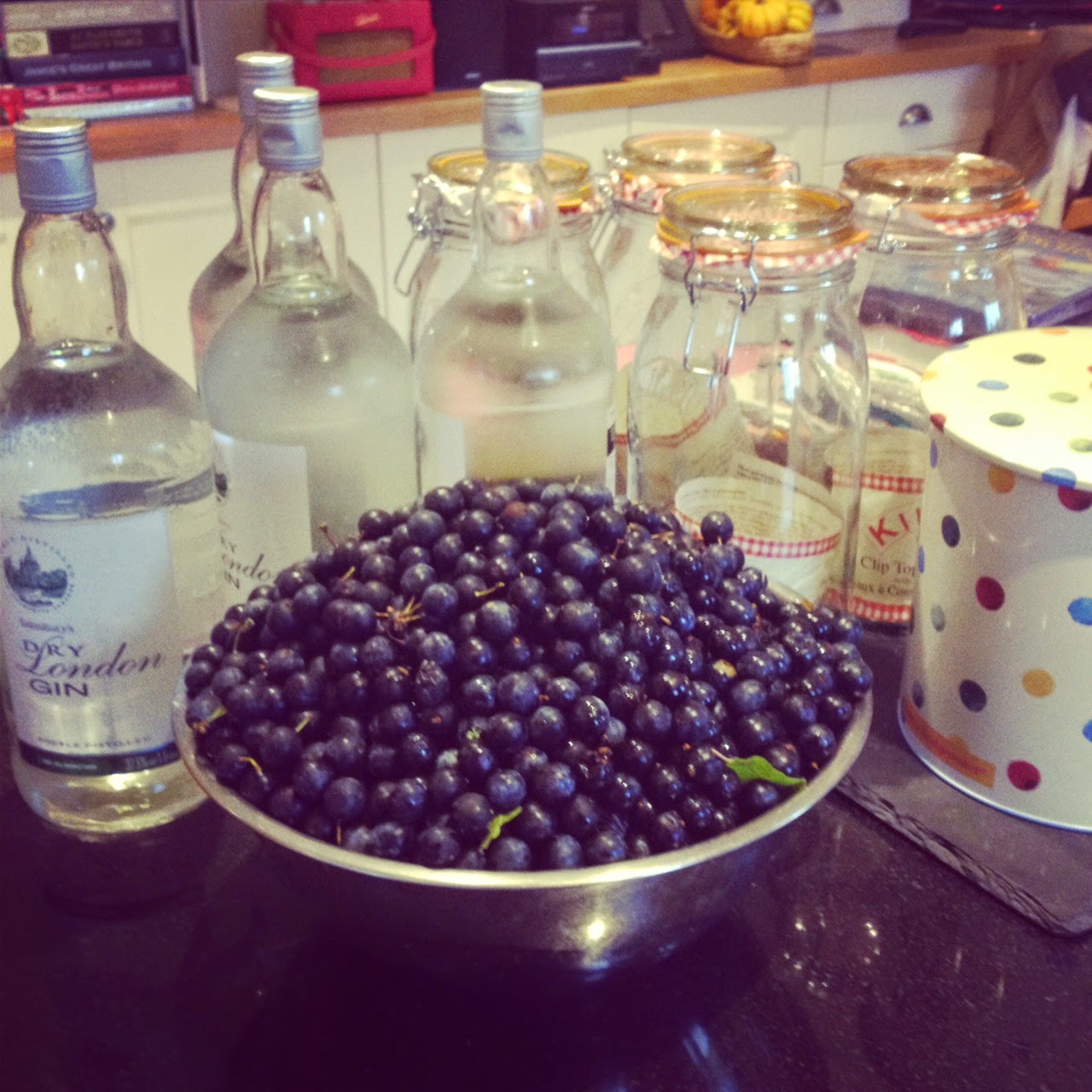Sloe Gin
The frost, a
harsh awakening that summer has gone for another year and winter is just around
the corner, though I can think of pleasanter ways of being reminded, but as the
Met Office love to say, ‘we can’t control the weather’.
It’s cold and brutal presence
takes many painstaking minutes every morning to remove from the car windscreen,
leaving your hands looking fifty shades of blue and with little feeling
remaining. Though, let’s just take a moment to thank the genius, who invented ‘De-icer’,
you deserve a knighthood, alongside Mr Muscle.
However,
apart from the lack of feeling that remains in our fingers and toes, all is not
at a total loss – the ‘first frost’ marks a crucial yet exciting moment for
many of us foodies – it symbolises the beginning of the sloe gin production
line – a process which has me tingling with excitement until tasting day.
Known as one
of the best hedgerow liqueurs, this delicious substance makes for a great
tipple which helps fend off the colder climes. Furthermore, apart from an excellent
hipflask filler, sloe gin serves its purpose in stews and casseroles, as well
as an excellent enrichment to a sauce accompanying a steak; in particular, it
works very well with venison.
So first
things first, you have to get the sloe gin production line up and running.
Sloes are better after the ‘first frost’, which helps to break down the
internal structures and gets the juices flowing, which is always a good thing!
(NB: if one year, the ‘first frost’ is late, home freezing is sufficient)
Sloes, for those of you who may not be acquainted with them, are bluey, purple
berries, found in the hedgerow.
Recipe for
Sloe Gin...
Ingredients
To make a
litre:
450g sloes,
pricked using a skewer
450g sugar
600ml gin
Method
v Wash the sloes thoroughly and remove any
stalks
v Using a cocktail stick, prick the sloes and
put them into a large jar or bottle and pour the sugar over, followed by the
gin.
v Secure with a lid and give it a good shake,
thoroughly mixing up all the contents.
v Shake every day for a fortnight to prevent
the sugar from settling at the bottom.
v Be sure to taste every week for 12 weeks to
ensure the sloes are releasing their flavour.
v After 12 weeks, pass the mixture through a
sieve before pouring the gin into sterilized bottles.
v For the best flavour, leave the sloe gin for
18 months so to make sure you aren’t deprived, have some back up supplies at
the ready.
From experience,
it’s always best to make a large batch! It’s a perfect gift for a lucky friend
or family member, but if you’re not careful, before you know it, you’re
completely out dry.
Cook's note ~ When decanting the sloe gin into bottles, never throw
the sloes away, they make perfect chutney and are mouth-watering in a homemade
truffle – an excellent gift for Christmas or an accompaniment in a festive
hamper. Stay tuned for more recipes!







No comments:
Post a Comment